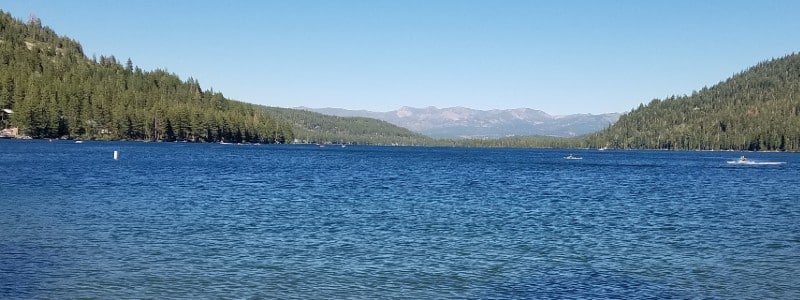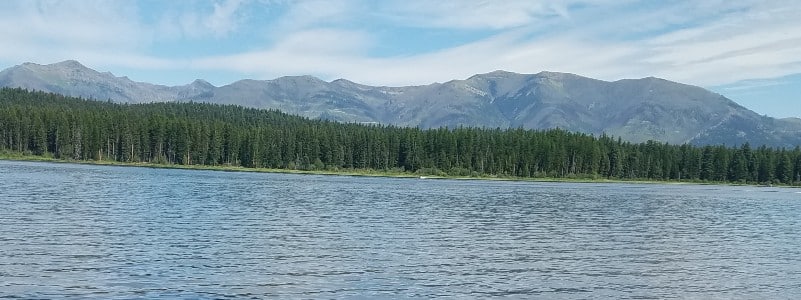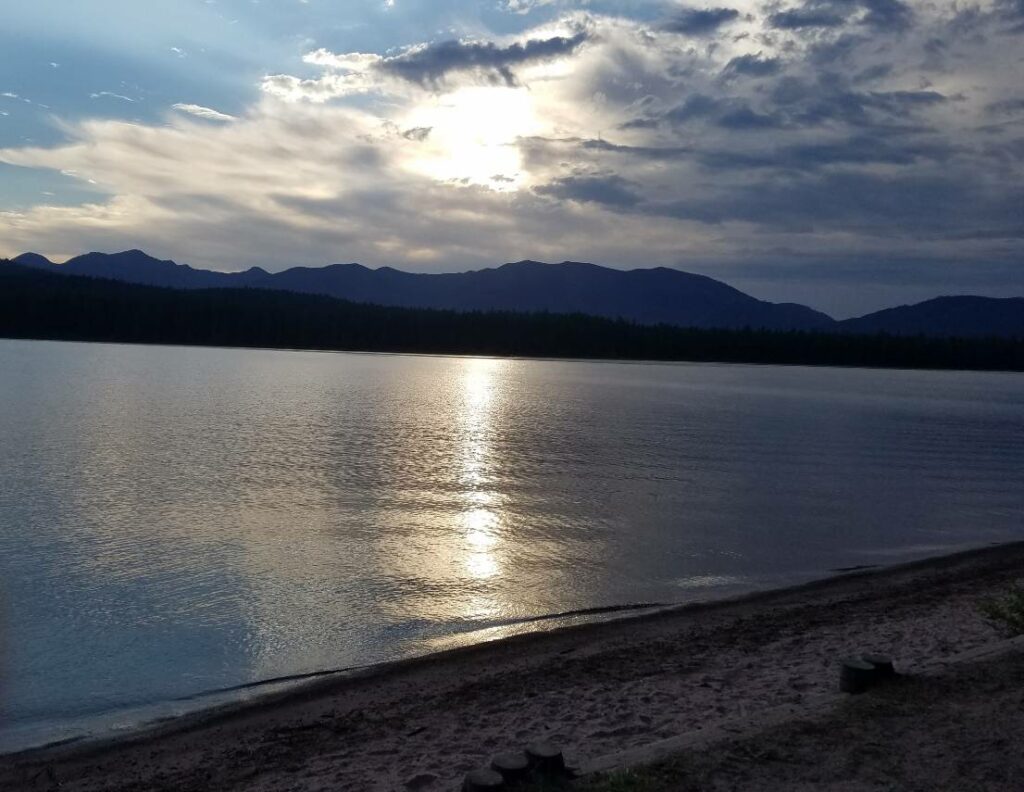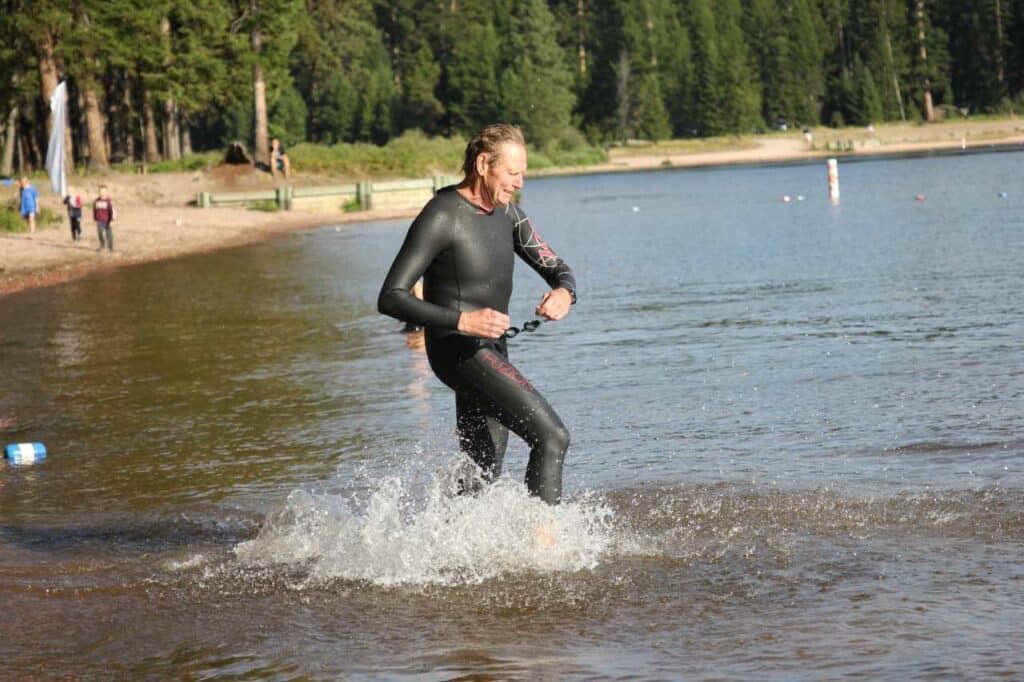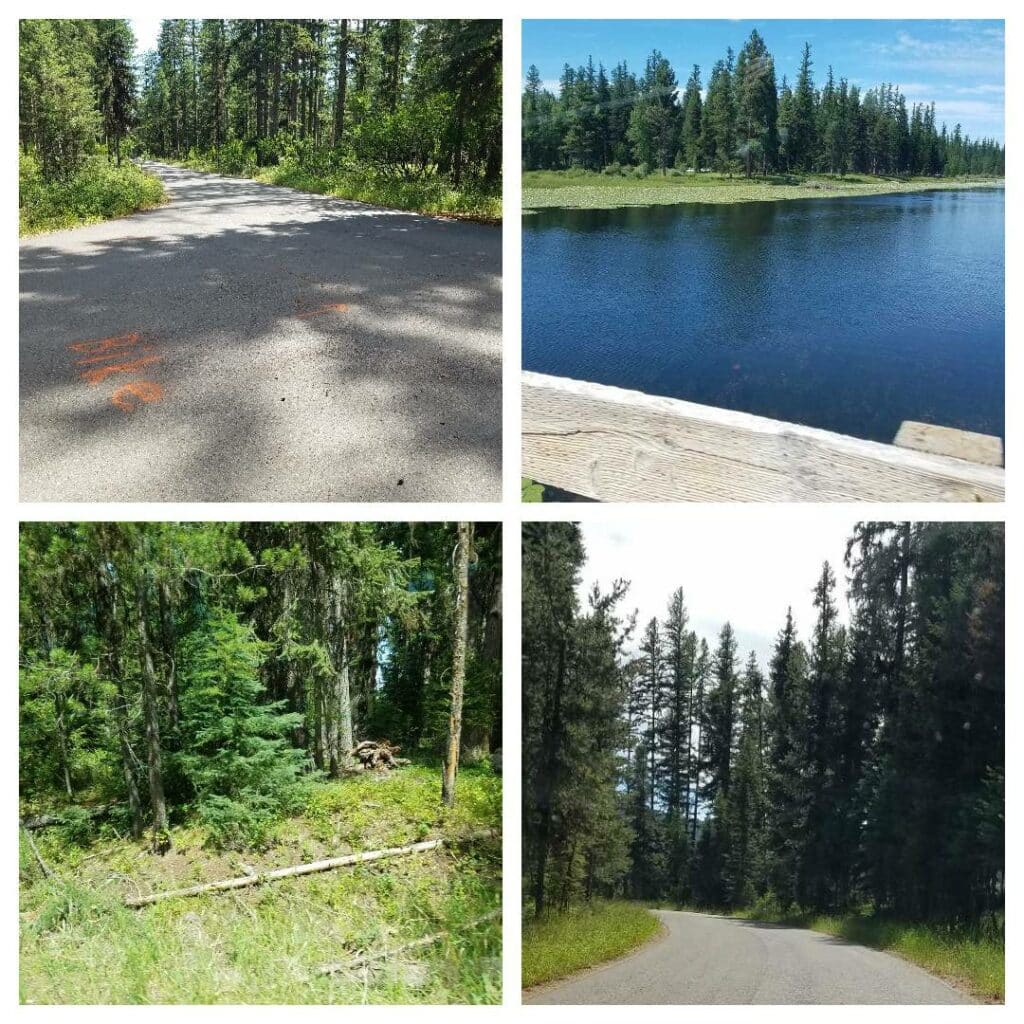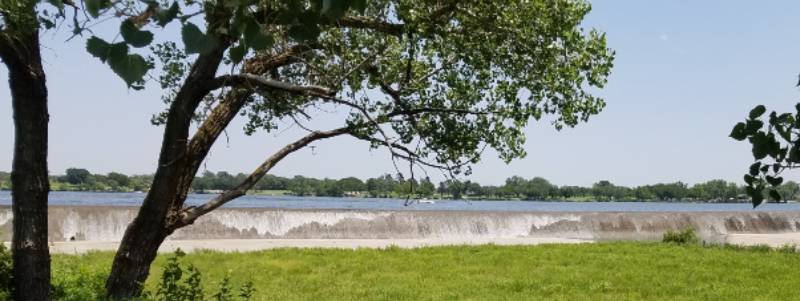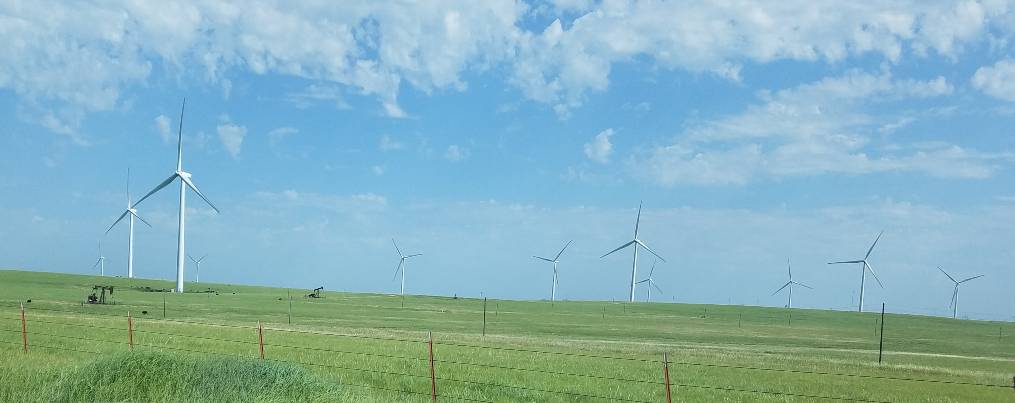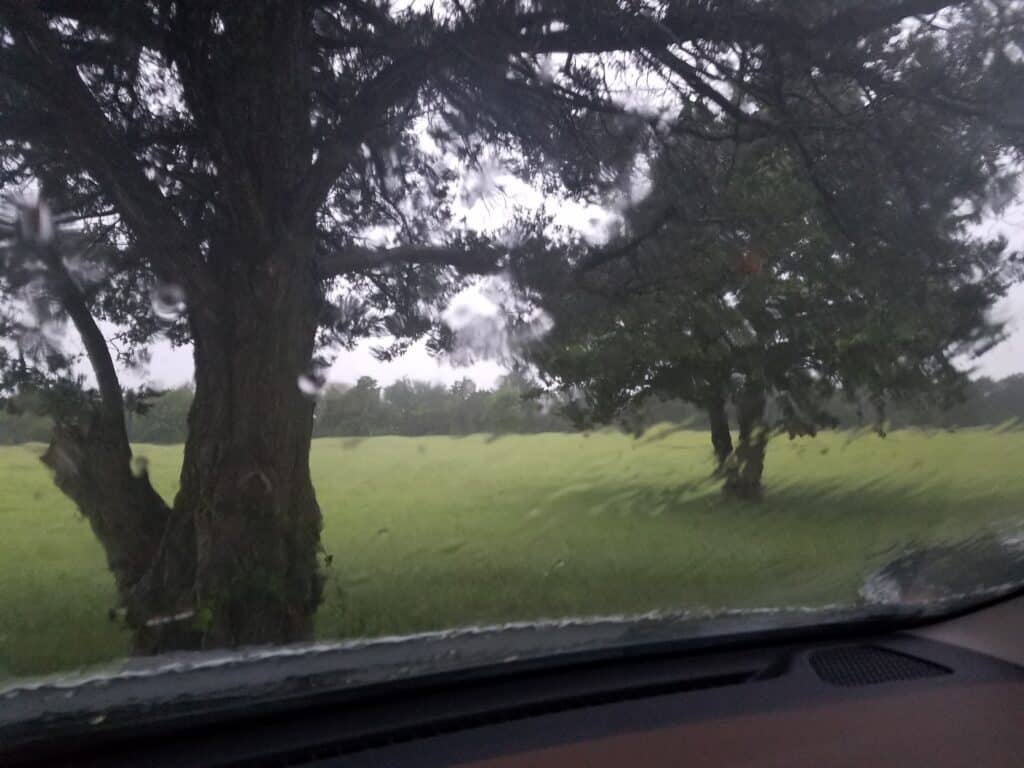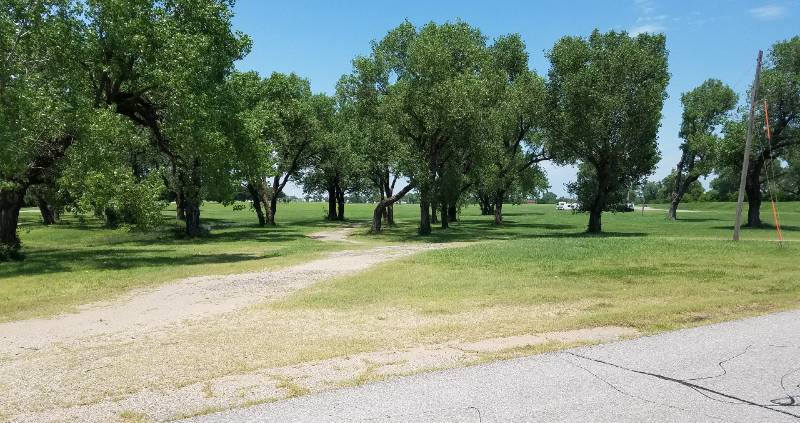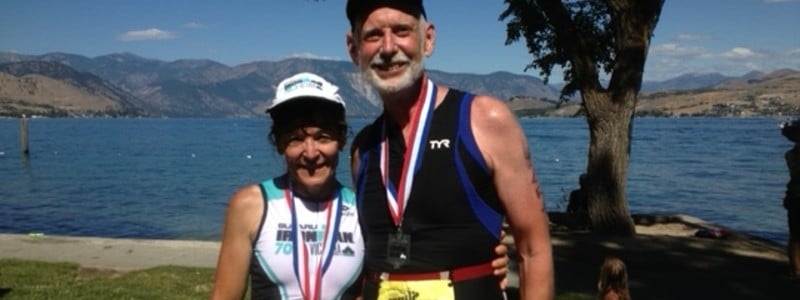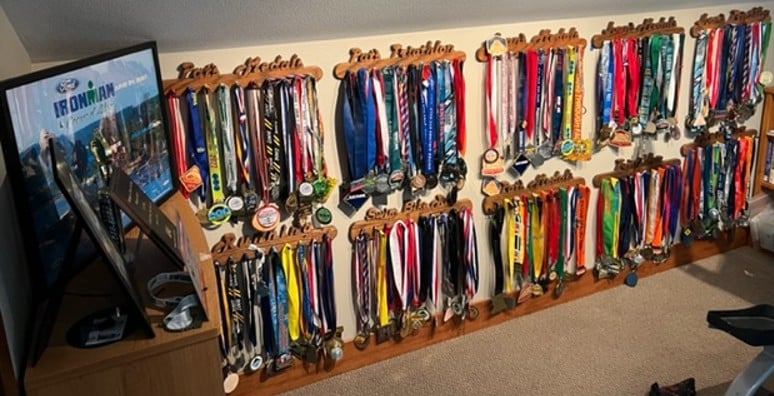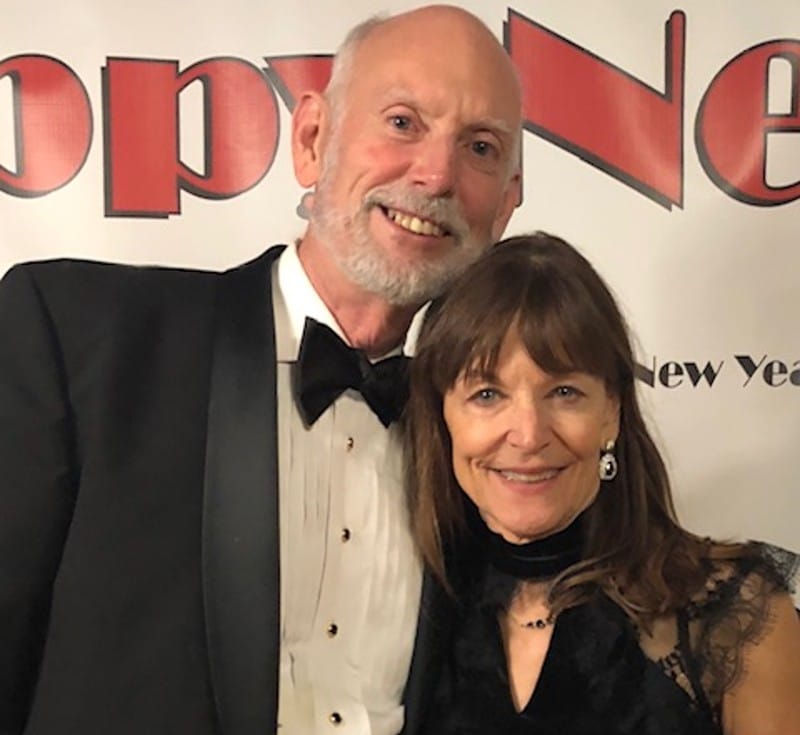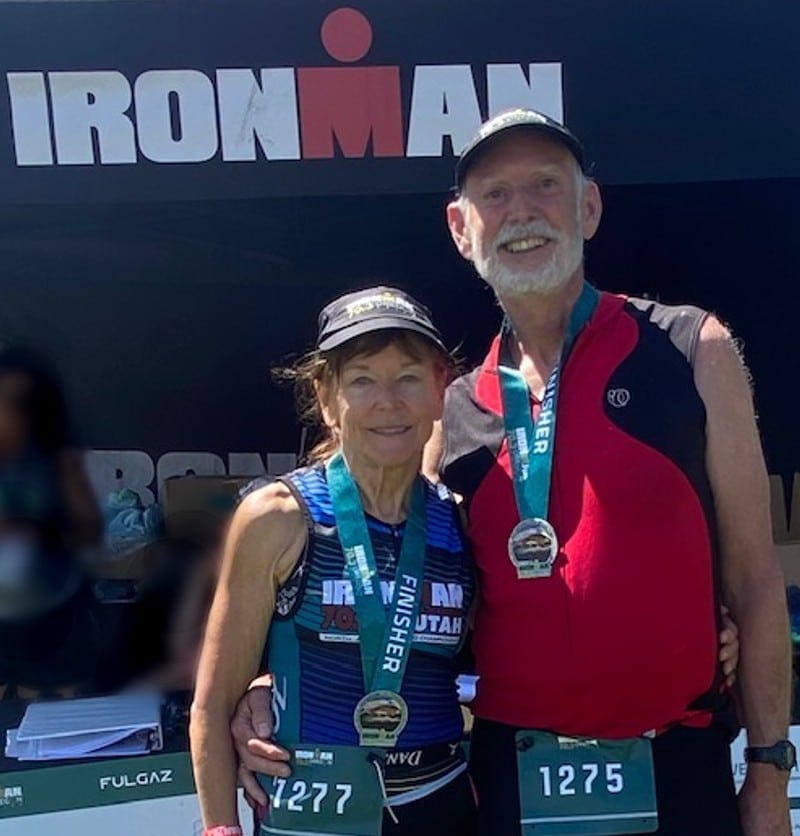Triathlon Across the USA: State #47 – California
Truckee, California; July 23, 2022 – Donner Lake Triathlon; West End Beach, Donner Lake.
The California triathlon was the first of three I would complete during late July and early August, while Joy and I traveled in northwestern states using a rented Class C motorhome.
Donner Lake is one of the most beautiful race venues in which I have done a sprint triathlon. It is hard to beat looking across a large, calm lake at tree-covered mountains and clear blue skies.
Planning the California Triathlon
I had not originally planned to do the California triathlon this year. However, looking at where we would be for the Idaho and Montana triathlons, doing it now, while in southern Idaho, would save a lot of travel next year.
Using one of my favorite triathlon-related websites, RunningintheUSA.com, I quickly learned about the Donner Lake Triathlon. This race would take place exactly one week before the Idaho triathlon. Another plus was it took place in an area of California, between Reno, Nevada and Lake Tahoe, of which we had fond memories from a visit nearly thirty years ago.
Visiting the Race Venue on Friday Afternoon
Ground zero for the Donner Lake Triathlon was West End Beach, a few miles west of downtown Truckee. The drive to and from West End Beach on Donner Pass Road doubled as a preview of the bike course. It was on this road that we would ride during the bike leg of the triathlon.
We arrived at a little before 5pm, the time at which packet pickup opened. Since there were many people at the beach on this Friday afternoon, the parking lot was nearly full. Besides, there were no spaces large enough to fit the motorhome.
We eventually found a grassy area that would fit the motorhome at the far end of the parking lot, away from the paved area.
We wondered out loud if we might park at the beach. It was convenient for sure.
However, by now, it was too late to call anyone at the Parks & Rec department. Oh well, at least we had our original plan.
Our Plan for RV Parking
After picking up my race packet, including the prized t-shirt, we started for the free RV parking location in downtown Truckee. It was here we planned to spend the night.
Before we had left Florida in May, I had looked for campgrounds around Donner Lake. The closest camping option was within Donner Memorial State Park, about three miles from West End Beach. However, there was no availability. The nearest commercial RV parks were 25 miles or more away.
An internet search uncovered an option for free overnight parking in downtown Truckee near the train station. I had verified this with a person from the California Welcome Center in Truckee months earlier. I was confident in my plan.
Dealing With the Unexpected
As triathletes, we learn to be prepared for the unexpected. Seldom, if ever, do things go exactly as planned, in our training or racing.
We arrived at the appointed address. To my surprise, there was no sign at that address showing RV parking that was either free or overnight. On the contrary, every other parking space in the lot had a sign posting that there could be no parking between 10 pm and 5 am.
By now it was approaching 6 pm on a Friday evening. The Welcome Center was closed so they could be of no help in resolving our problem.
As we were debating what to do, a train came through. As the engineer honked the train’s horn, I am sure I saw out of the “corner of my eye” Joy jump three inches off the seat. She promptly decided about this place announcing, “We can’t sleep here tonight.”
A New Plan
Before leaving, however, Joy called the local police department to ask about the possibility of parking downtown or even at West End Beach. A dispatcher took the call.
Within a few minutes, Joy received a call from a police officer. While he was uncertain about parking at the beach, he promised we would not be ticketed. He told Joy that, in the worst case, they would ask us to leave.
After being refused an overnight spot by a couple of businesses on the road back to West End Beach, we took our chances and parked in the area we had occupied during packet pickup.
We parked as far as practical away from the beach entrance and paved parking area and settled in for what we hoped would be undisturbed sleep before this triathlon.
Thankfully, our prayer for a restful sleep was answered.
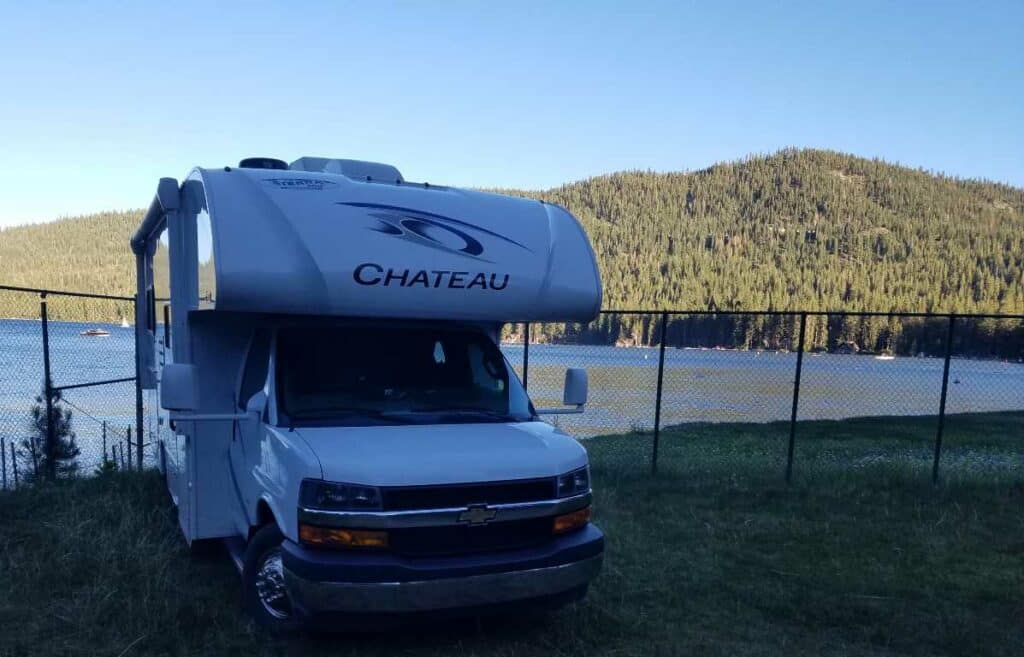
40th Annual Donner Lake Triathlon
At 40, the Donner Lake Triathlon is the longest running triathlon in which I have competed. It is also one of several open water swimming, mountain biking, running, and triathlon events managed by Big Blue Adventure (Tahoe City, California).
This race was part of a two-day event that included the sprint triathlon and kids triathlon on Saturday. Adult triathletes raced in age group, Clydesdale/Athena, or relay categories.
On Sunday, the Olympic and half Ironman triathlons were held along with aquabike, duathlon, and three distances of open water swim competitions.
The advertised distances for the individual legs of this USAT-sanctioned sprint triathlon were:
- Swim: 0.25 miles (440 yards or 400 meters) – Actual (not including distance from the water to the transition area): 0.28 miles (500 yards or 457 meters)
- Bike: 6 miles (10 km) – Actual: 6.5 miles (10.5 km)
- Run: 2 miles (3.2 km) – Actual: 1.9 miles (3 km)
Actual distances shown are from my Garmin Forerunner 920XT.
Swim
With a water temperature in the high 60s °F, the race was definitely wetsuit legal according to USAT rules. However, I wore a wetsuit not so much because of the water temperature but because of the 41°F air temperature.
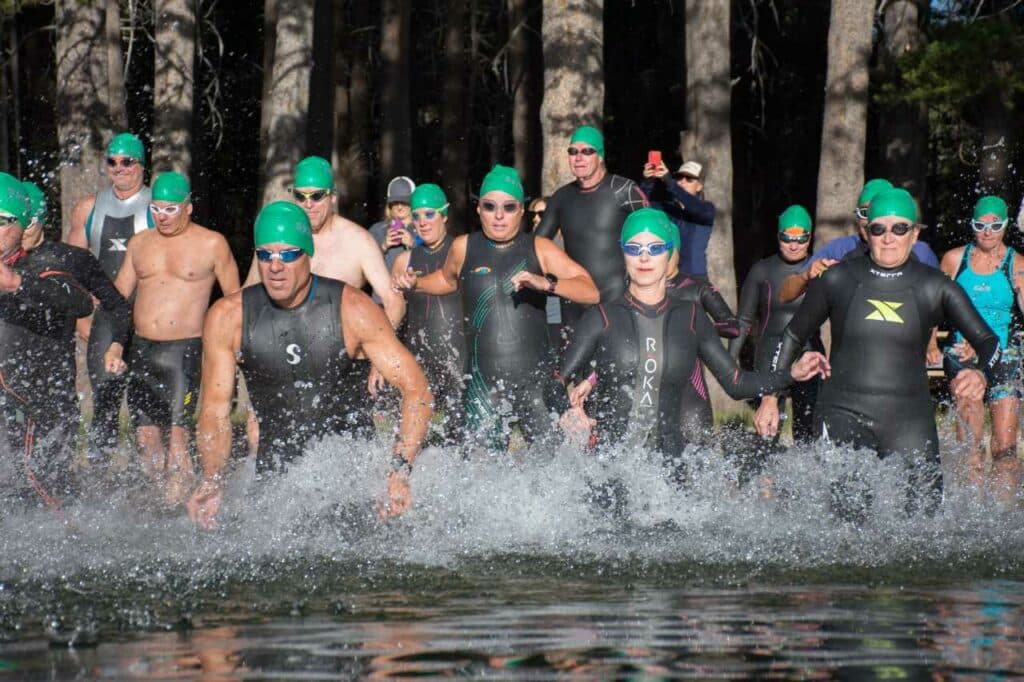
Swimmers left the beach in three waves at five-minute intervals. The third and final wave included men over 50 and women over 40. I intentionally started near the back of the group because I expected that at this elevation (6,000 feet), I would have a slower swim pace.
The rectangular swim course included two left turns before exiting the water at a bright yellow ‘Swim Out’ arch not far from where we had slept the night before.
Sure enough, about halfway through the swim, my breathing became labored. There was even a moment during which I thought about stopping to tread water.
Now, I was even happier that I had listened to other triathletes before the race, as they explained they would wear a wetsuit because of the added buoyancy.
I slowed my pace. As expected, my breathing returned to normal, and I finished the swim without issue. However, this experience was a major reason I started the post on Planning for a Triathlon at Higher Altitude.
The Best Seat in the House
I didn’t mention earlier that our camping spot for the night gave us a clear view of the swim course from the back window of the RV. Rather than dragging Joy out of bed before the crack of dawn for the opening of the transition area, I let her sleep.
By the time the race started, she was awake and watched the swim from the comfort of our bed. In fact, she was close enough to the swim exit to watch me leave Donner Lake.
Bike
From the transition area, we walked our bikes about 50 yards to the bike mount spot on the side of Donner Lake Road. After mounting our bike, we rode in the bike lane for the little over three miles to the entrance of Donner Lake Memorial Park. Here there was a cone in the middle of the road and volunteer directing triathletes to make the 180° turn.
The bike course for this triathlon fit my definition of ‘flat and fast’. I would have enjoyed an even longer ride because of the good condition of the road, gentle, rolling hills, and perfect weather.
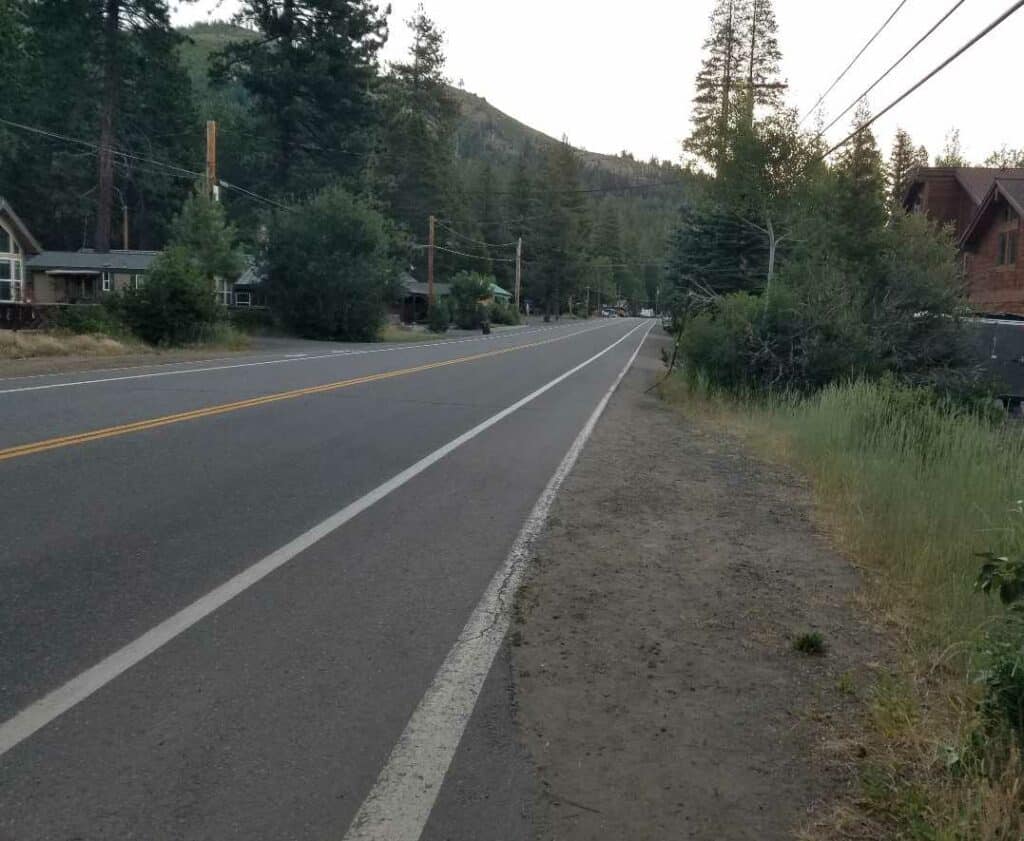
Run
The out-and-back run course left West End Beach in the opposite direction from the bike course. The entire course was on South Shore Drive, a road through a neighborhood with houses on one side of the street backed up to Donner Lake.
Unlike the bike course, the run course included a series of relatively short hills. Residents of this neighborhood lined both sides of the road to cheer on the runners. Or did they want to know what this crazy bunch of people were doing?
After the turnaround midway through the run, we headed back to the transition area. However, a short distance from where we had entered the run course, volunteers directed us off the road. We crossed through a narrow ditch and across a grassy area while sprinting to the finish line.
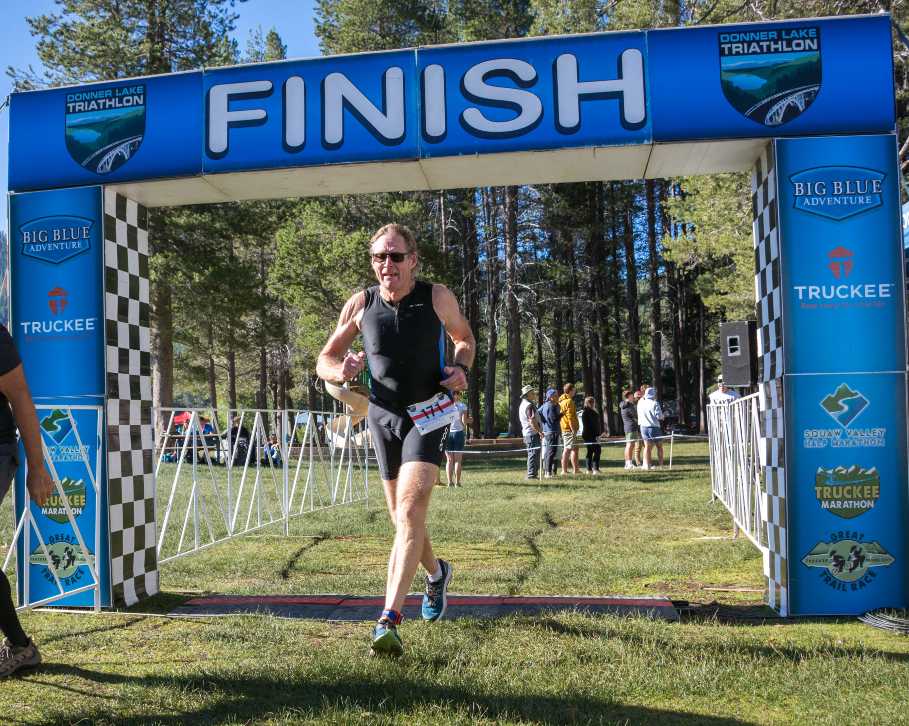
After the Donner Lake Triathlon in California
Following the awards ceremony at which I received a glass with the Donner Lake Triathlon logo etched into it, we started our journey toward the location of the next triathlon, Preston, Idaho. After a week of long days of driving, we followed a much more leisurely timeline. We now had five days to travel the distance we had previously covered in 1-1/2 days.
Race Firsts for the California Triathlon
- First triathlon at which we camped at the location of the race.
- Longest running triathlon in which I have competed.
What Has Been Your Most Beautiful Race Venue?
Where was the most beautiful setting of a triathlon in which you have taken part? Let us know in the Comments below.
Special Acknowledgement
A special thank you to Harry Lefrak, Lefrak Photography, for allowing me to include his photos in this post.
Please visit his website at http://www.lefrakphotography.com/. Scroll through a gallery of gorgeous photos of endurance racing in the beautiful Lake Tahoe-Donner Lake area.

